Mak the Mole
Mak the Mole is a social norms campaign created by Student Well-Being aimed at dispelling myths and misperceptions related to mental health, alcohol and cannabis use, and more. Whenever you see Mak (rhymes with "back"), you can expect to find data collected from S&T students, most often from the Missouri Assessment of College Health Behaviors (MACHB), an annual survey completed on campus each spring semester.
You might be wondering- what are social norms? According to the National Social Norms Center, social norms refer to values, beliefs, attitudes, and/or behaviors shared by a group of people. They are often based on what people believe to be normal, typical, or appropriate. Social norms can function as unspoken rules or guidelines for how people behave, and for how people are expected to behave. The Mak the Mole campaign allows students to question their assumptions of college life with data taken directly from S&T students. Check out some examples and previous campaigns below or find downloadable versions here located in the Student Well-Being Google Drive.
-346x346.png)
Did you know you can ask Mak questions?
Using Ask Mak, you can submit anonymous questions related to mental health, wellness, and more. The answers come from Student Well-Being staff and are always evidence based, non-judgmental, and researched.
Learn More About Social Norms
The social norms approach focuses on positive messages about healthy behaviors and attitudes that are common to most people in a group:
- It does not use scare tactics or stigmatize an unhealthy behavior.
- It avoids moralistic messages from authorities about how the target group “should” behave. Instead, it simply presents the healthy norms already existing in the group.
- It builds on the assets already in the community, through participation by community members, and by highlighting those who make healthy choices*
Types of social norms:
- Behavioral- the behaviors and actions engaged in by a majority of group members (in this case, the group is Missouri S&T students!). This type of social norm is typically used to promote a productive, non-harmful, and/or positive behavior that students are already doing. Examples:
- "85% of Miners have avoided binge drinking in the past year"
- "77% of Miners turn to their peers when personal concerns arise"
- Attitudinal- the attitudes and believes held by a majority of group members. This type of social norm is typically used to reduce the potential harmful impact of false beliefs or promote productive, non-harmful, and/or positive beliefs that students currently hold. Examples:
- "75% of Miners believe it is their responsibility intervene in a situation where a peer's health or safety is in jeopardy"
- "Most Miners define a designated driver as someone that is completely sober and hasn't had any drinks"
- Many social norm campaigns use both behavioral and attitudinal approaches to disspell myths and assumptions surrounding college life. Examples:
- "While many Miners believe a typical student drinks 5 nights per week (attitudinal), the average student actually drinks less than 2 nights per week (behavioral)"
- "While many Miners believe the majority of students use cannabis (attitudinal), only 30% of Miners have used cannabis in the past year (behavioral)"
#images
To point to this anchor, create a link with the target "#images" instead of a URL. Note that this blue block will not be visible on your live site or in previews.

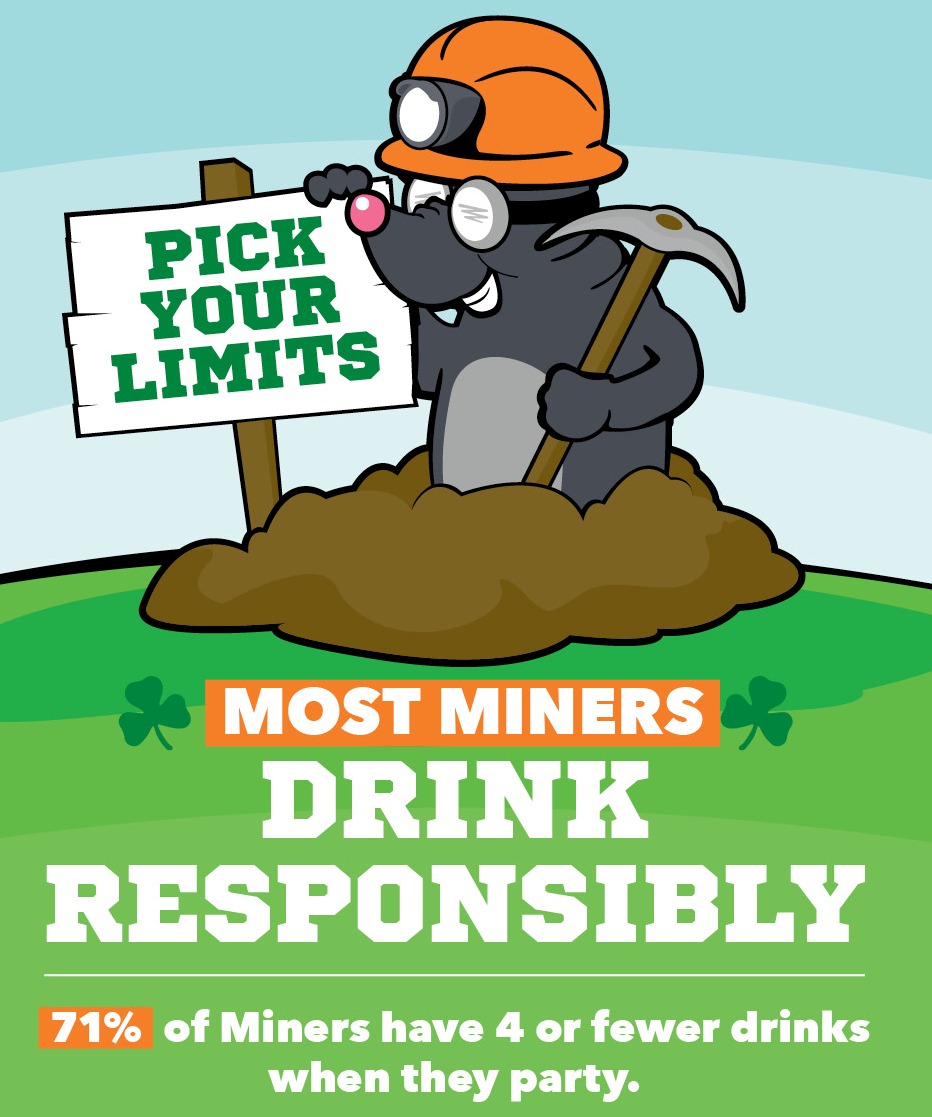
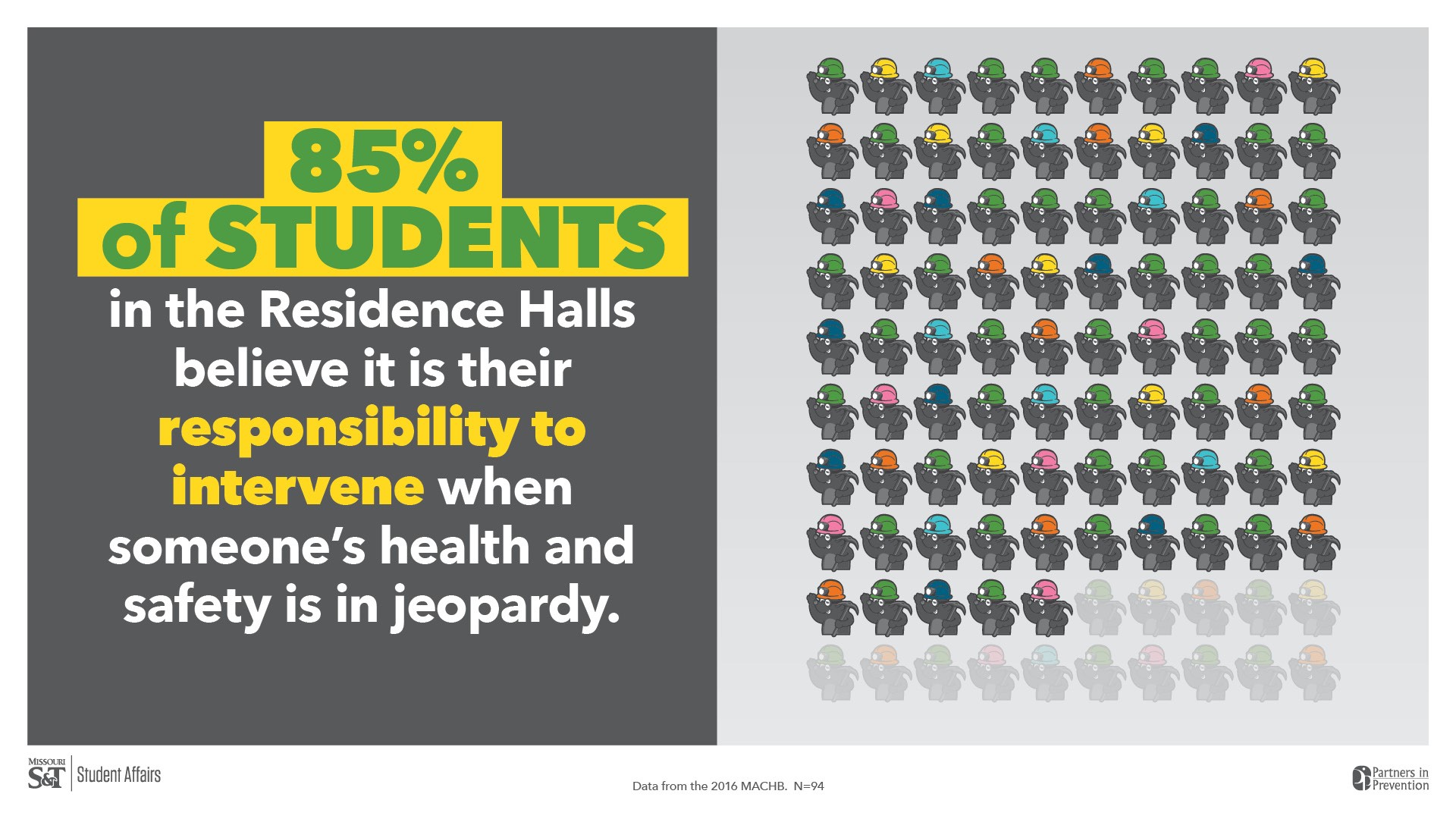
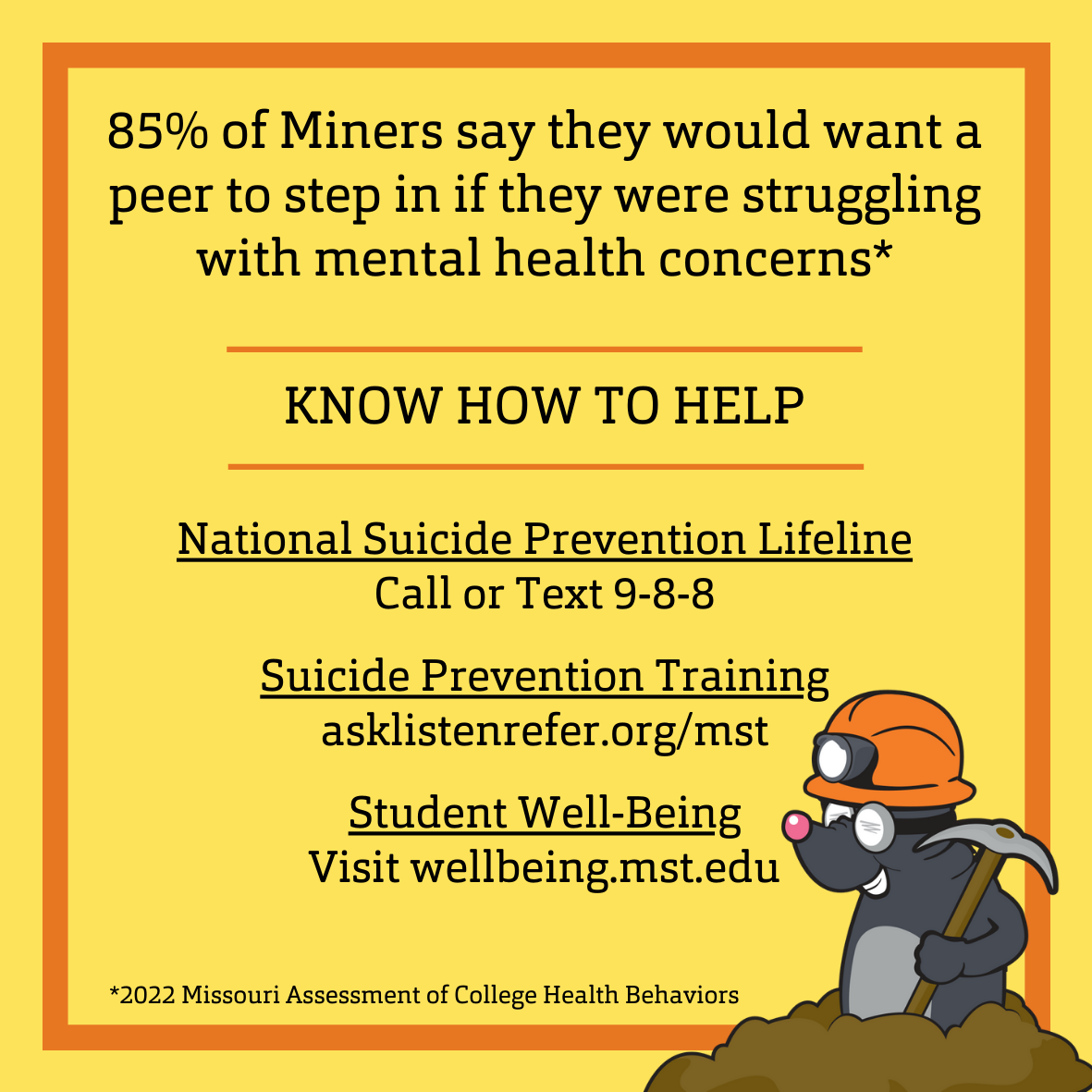


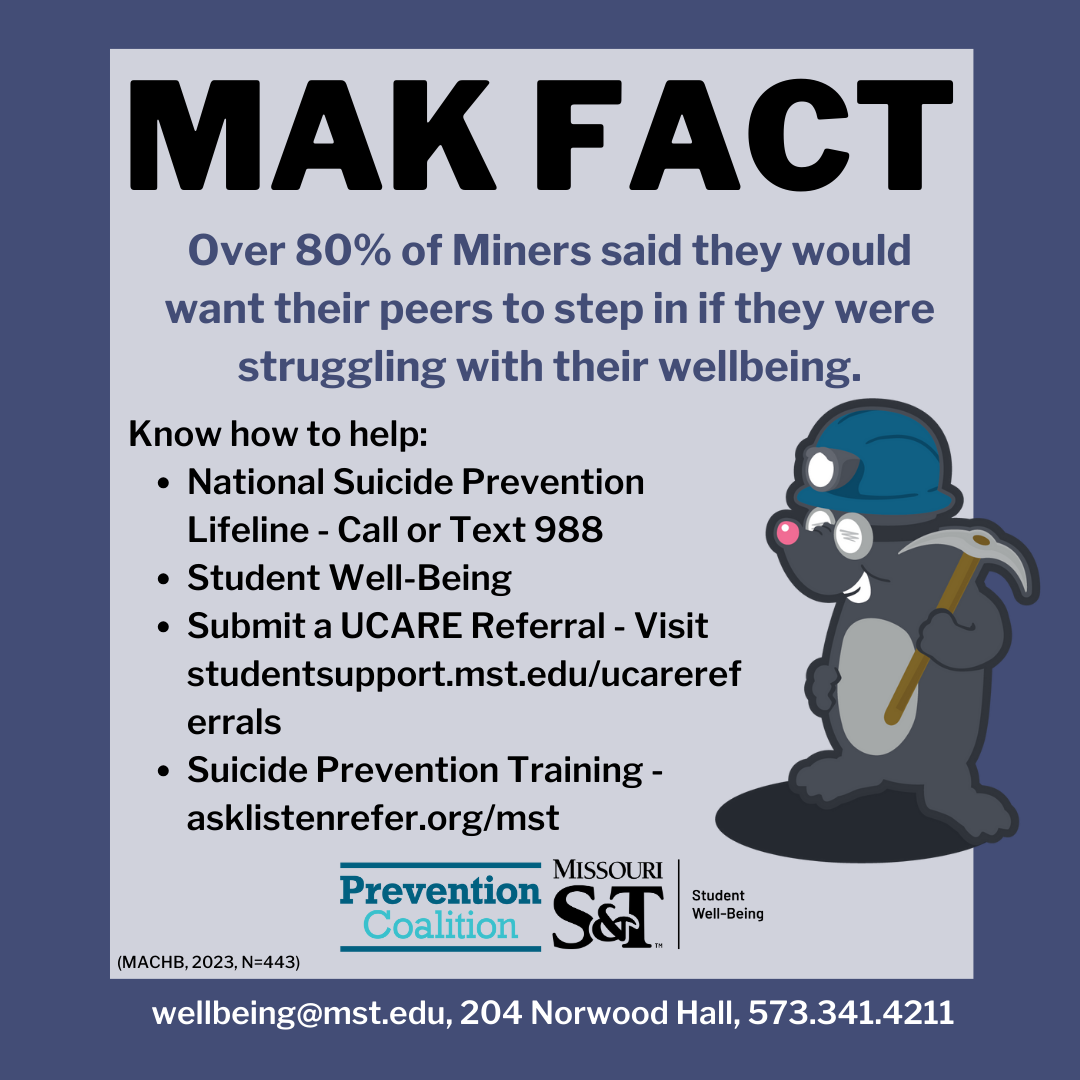

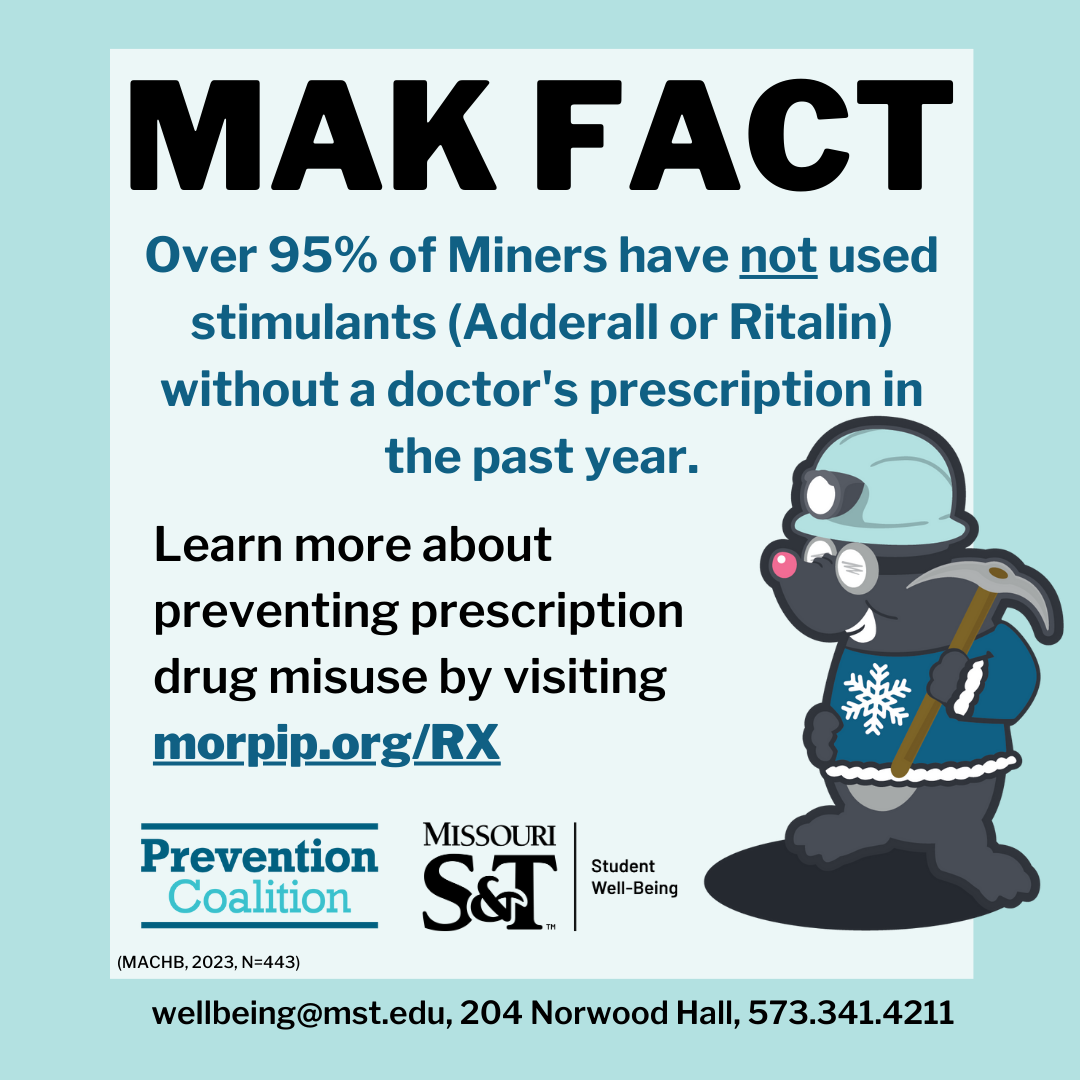
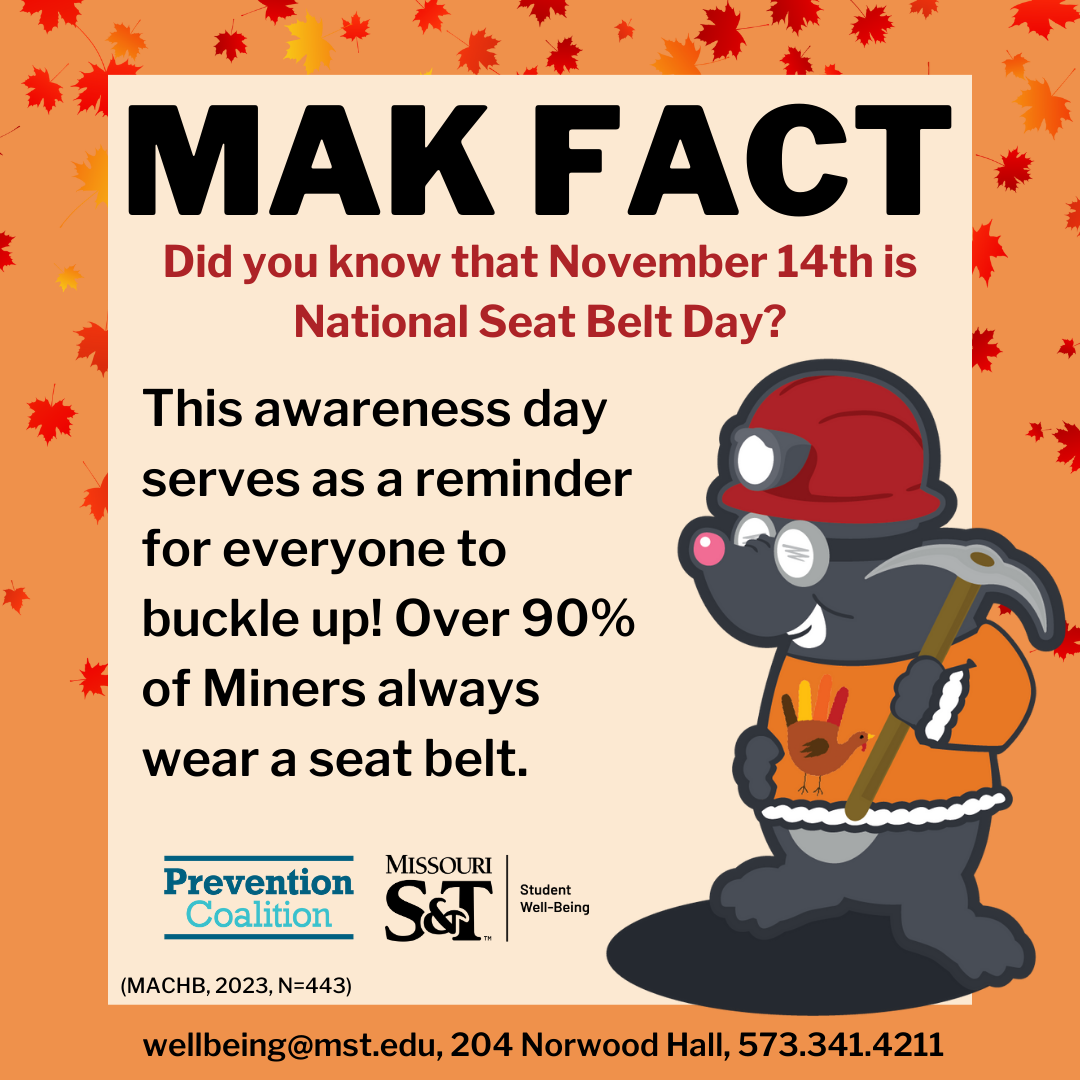
.png)
Follow Student Well-Being